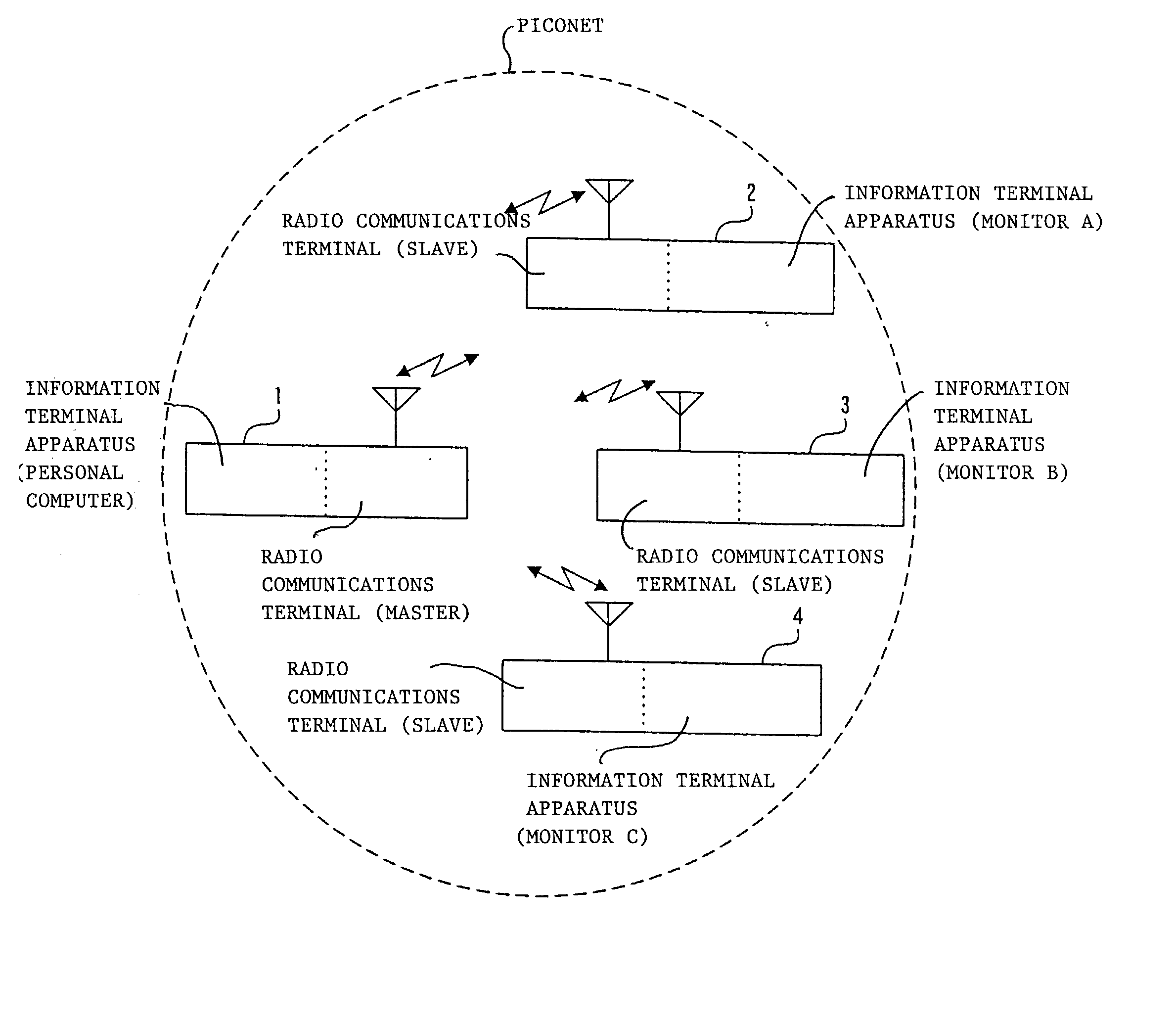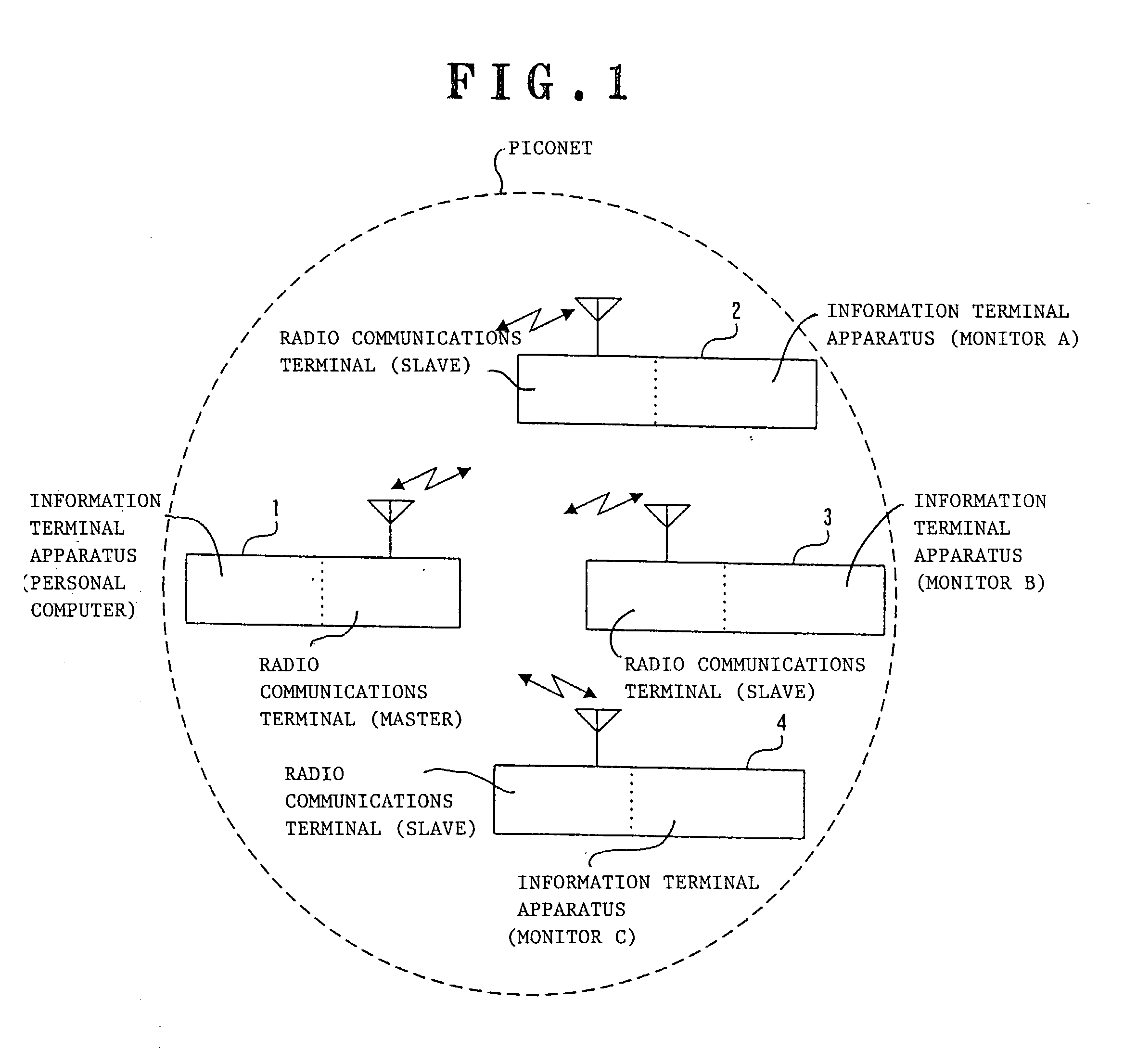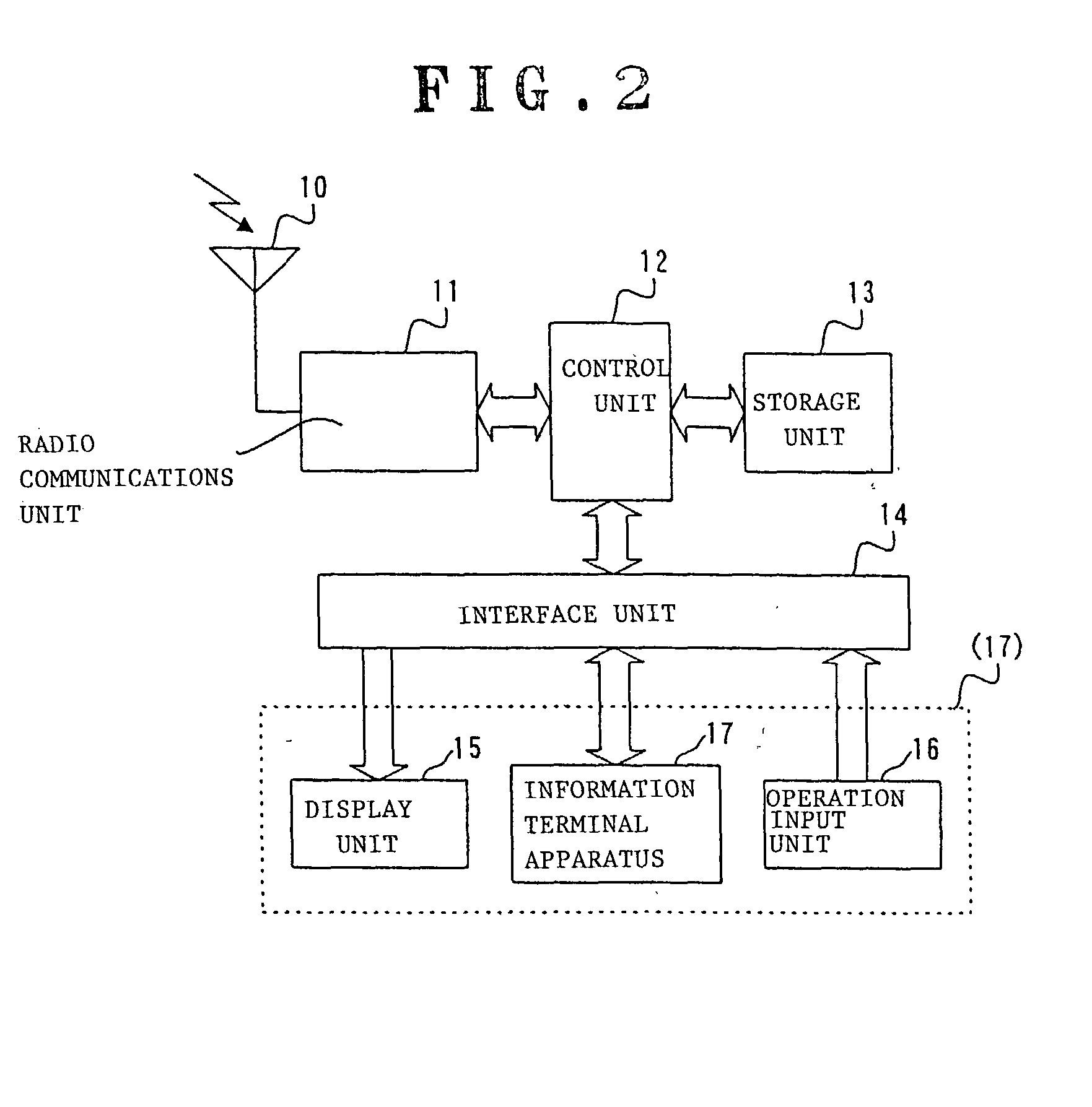Radio communication terminal having functions of master station or slave station
a radio communication terminal and master station technology, applied in the direction of data switching by path configuration, electrical apparatus, network topologies, etc., can solve the problem of difficult user identification of a bt device to serve as a slave, user difficulty in specifically identifying which printer corresponds, and the user's ability to know the bt device address of the slave apparatus
- Summary
- Abstract
- Description
- Claims
- Application Information
AI Technical Summary
Benefits of technology
Problems solved by technology
Method used
Image
Examples
first embodiment
[0042] Processes and operations of the invention will now be described based on the flow charts in the accompanying drawings.
[0043] First, processes and operations of the master BT apparatus (personal computer 1) will be described based on the flow chart in FIG. 3.
[0044] A processing subroutine shown in the flow chart in FIG. 3 (hereinafter simply referred to as "the subroutine" or "the present subroutine") is one of so-called application programs for the BT module included in the radio communication unit 11. Specifically, the present subroutine is stored in a memory of the storage unit 13 along with a main routine program (not shown) for controlling the BT apparatus shown in FIG. 2 as a whole. The .mu.CPU of the control unit 12 executes the present subroutine step by step at predetermined timing in synchronism with a clock incorporated therein.
[0045] Therefore, the user may start the present subroutine by inputting a certain command from the information terminal apparatus 17. Alter...
second embodiment
[0085] the invention will now be described.
[0086] The purpose of the first embodiment is to allow a user to select a desired BT apparatus from among a plurality of BT apparatuses present in a Piconet, and to confirm it specifically. On the contrary, the second embodiment described below is aimed at identification of each BT apparatus present in a Piconet. Specifically, the purpose of the second embodiment is to allow a master to identify a peripheral apparatus which actually corresponds to each of BT apparatus that is recognized by the master based on a BT device address.
[0087] For example, possible applications of this kind, as shown in FIG. 6, include a Piconet in which a centralized control terminal of a car navigation apparatus serves as the master apparatus, and in which a plurality of portable terminals that can access such a centralized control terminal serve as slave apparatuses.
[0088] Specifically, let us assume that a plurality of users having portable terminals travel in ...
third embodiment
[0099] the invention will now be described.
[0100] In the first and second embodiments, a user must perform a confirmation process to identify the device addresses of BT apparatus present in a Piconet and to identify each BT apparatus. On the contrary, in the third embodiment described below, a master acquires identification numbers specific to slaves, and automatically identifies device addresses and each BT apparatus using such identification numbers without requiring a user to perform a confirmation process.
[0101] For example, such an application is possible when a Piconet is formed by the car navigation apparatus to serve as master apparatus, and the plurality of portable terminals to serve as slave apparatuses, described in the second embodiment.
[0102] First, an operational subroutine of a master in the third embodiment will be described based on the flow chart in FIG. 8. Processes in the subroutine shown in FIG. 8 are similar to those in the subroutine of processes of a master ...
PUM
 Login to View More
Login to View More Abstract
Description
Claims
Application Information
 Login to View More
Login to View More - R&D
- Intellectual Property
- Life Sciences
- Materials
- Tech Scout
- Unparalleled Data Quality
- Higher Quality Content
- 60% Fewer Hallucinations
Browse by: Latest US Patents, China's latest patents, Technical Efficacy Thesaurus, Application Domain, Technology Topic, Popular Technical Reports.
© 2025 PatSnap. All rights reserved.Legal|Privacy policy|Modern Slavery Act Transparency Statement|Sitemap|About US| Contact US: help@patsnap.com



